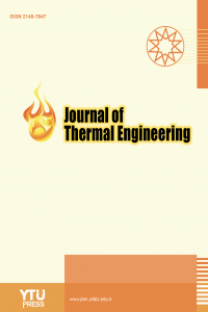Comparative analysis and optimization of thermodynamic behavior of combined gas-steam power plant using grey-taguchi and artificial neural network
Comparative analysis and optimization of thermodynamic behavior of combined gas-steam power plant using grey-taguchi and artificial neural network
Performance Enhancement, Grey-Taguchi Analysis, Artificial Neural Network, Optimal Conditions Gas-Steam Power Cycle, Response Table,
- Yayın Aralığı: 6
- Başlangıç: 2015
- Yayıncı: YILDIZ TEKNİK ÜNİVERSİTESİ
Performance analysis and exergy assessment of an inertance pulse tube cryocooler
Prateek MALWE, Bajirao GAWALI, Rustam DHALAIT, Rustam DHALAIT, Nandkishor Sheshrao DESHMUKH
Subhash LAHANE, Prashant DESHMUKH, Manoj NARGADE
Heat transfer performance of nanofluids in heat exchanger: a review
Rohinee BARAI, Devesh KUMAR, Atul WANKHADE
Meryem TERHAN, Sena Saliha ABAK
Performance improvement of shell and tube heat exchanger by using Fe3O4/water nanofluid
Saad NAJIM, Adnan HUSSEIN, Suad Hassan DANOOK
Buoyancy force and magnetic field effects on laminar vortex breakdown and fluid layers
Brahim MAHFOUD, Mohammed MOUSSAOUI
Review on latent thermal energy storage using phase change material
